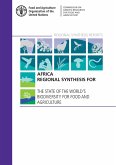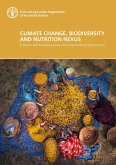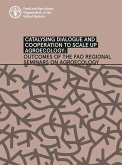Assessing nutrition and biodiversity together, using a suite of indicators, is at the heart of the new Cross-cutting Initiative on Biodiversity for Food and Nutrition, led by FAO in collaboration with Bioversity International and other partners. Biodiversity and nutrition play their parts at three levels − ecosystems, the species they contain, and the genetic diversity within species. The aim of the initiative is to develop measurement tools and indicators at these levels, addressing nutrient composition and consumption of underutilized, uncultivated, indigenous foods of plant and animal origin. Further research is needed to increase the evidence base to fill knowledge gaps with better inventories and information on nutrient composition and consumption of foods at the species and intra-species level, and within specific agro-ecological zones. For nutrition, this means introducing more nutrient composition data on biodiversity in food composition databases and tables; developing and using dietary assessment instruments that capture food intake at the species and variety/breed level; and allowing food labelling that encourages awareness of the often unique composition of these neglected, nutritionally-rich foods. Nutrition and biodiversity feature directly the Millennium Development Goals: halve the proportion of people who suffer from hunger; and ensure environmental sustainability. In combination, a nutrition and biodiversity initiative provides the very foundation for achieving these MDGs. This document presents a food composition indicator for biodiversity and nutrition. The indicator will contribute to monitoring and achieving the MDGs and many other important goals. The ultimate goal, however, is to bring awareness of biodiversity to the nutrition sector, and thus help us value, sustainably promote and preserve our planet's biodiversity for food and nutrition security for all.
Dieser Download kann aus rechtlichen Gründen nur mit Rechnungsadresse in A, B, CY, CZ, D, DK, EW, E, FIN, F, GR, H, IRL, I, LT, L, LR, M, NL, PL, P, R, S, SLO, SK ausgeliefert werden.









